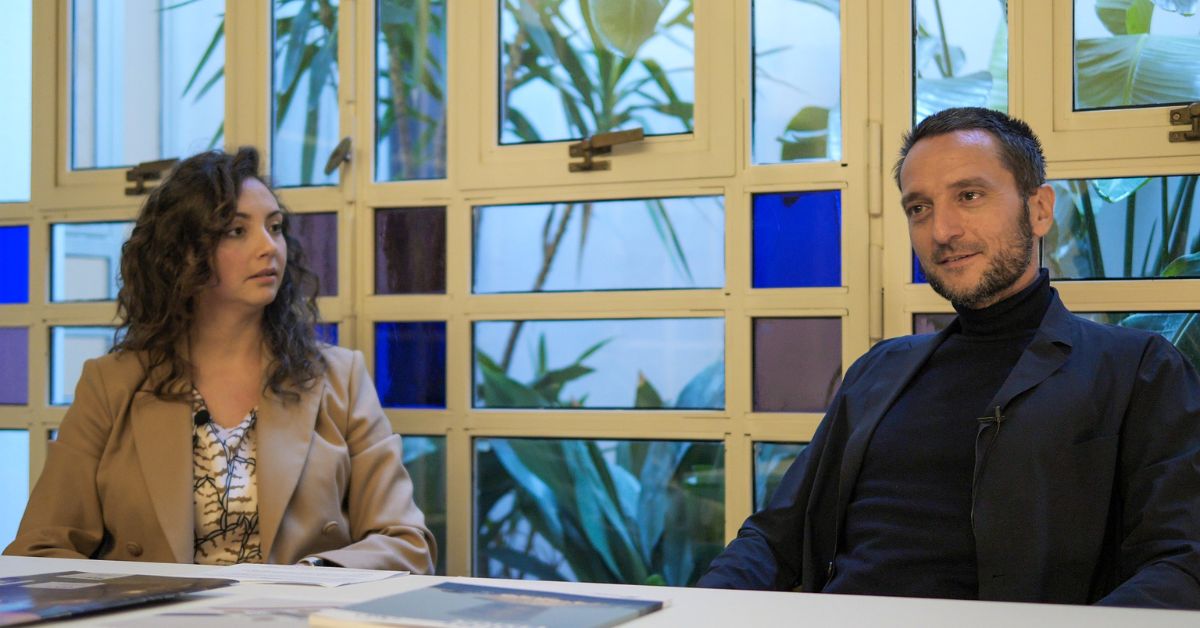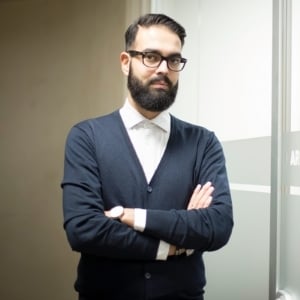Architectural Talks, the series of interviews by Manni Group in collaboration with YAcademy, meets Andrea Zamboni, Architect Ph.D. - Associate and Managing Director of Zamboni Architetti Associati.
In this article you will find:
Zamboni Architetti Associati
Zamboni Architetti Associati is the architectural firm founded in 2000 by Massimo Zamboni and Sabrina Zamboni. The firm has created and designed commercial and industrial buildings, public spaces, restorations, redevelopment plans, urban and landscape masterplans, working on a local, national and international scale.
ZAA’s most famous redevelopment projects include the urban regeneration of Isola San Rocco in Reggio Emilia, an example of contemporary restoration of modern architecture by Luigi Vietti, as well as Fonderia Lombardini-Aterballetto, one of the main examples of industrial heritage reuse in Emilia-Romagna.
The firm won the Big See Architecture Award in 2020 for the regeneration of the San Pietro Cloisters in Reggio Emilia; it was a finalist in 2021 - with the same project - for the Italian National Architecture Award promoted by MAXXI and the Milan Triennale.
Zamboni Architetti Associati is an example of experimentation in the field of research and innovation, focusing on human needs in relation to the environmental and functional context.
Interview with Andrea Zamboni, CEO
Manni Group: The Zamboni Architetti Associati firm is responsible for numerous regeneration interventionsfrom historical buildings to industrial archaeology. How much can and must be built off-site in interventions of this type?
Andrea Zamboni: Yes, in fact our firm deals a lot with Heritage in a broad sense... And by Heritage we mean from ancient structures, to the recovery of industrial archaeology, to the restoration of modern as well, for example.
Let's say that the area that lends itself best to off-site work would be the recovery of industrial archaeology, because it entails specific site problems, issues also in finding the materials of the structures such that normally the structures that we generate inside these buildings are structurally self-supporting, so in fact they lend themselves to this type of operation. In Shed 15 at the Parco Innovazione Reggiano we are working in this manner, and more generally off-site helps, indeed, it helps a lot.
There are some contexts where it is more complicated, such as in listed contexts, but it would also fit in with what the Superintendency is asking for, i.e. the reversibility of the interventions. And so, all in all, this would actually make life easier.
M.G.: Architect Zamboni, you have a background in the Centro Studi Domus... What do you think is the path of contemporary architecture with regard to the issues of environmental sustainability?
Zamboni: Yes, during my time at Domus, let's say my role was also to investigate a bit, to discover new design trends around the world.
I have to say that sustainability is there, nowadays we take it for granted, in all projects everything has to be sustainable, otherwise there would be no point in even carrying them out.
The most direct translation of sustainability usually leads to unsatisfactory results, whereas there are projects that integrate, let's say, the concept of sustainability right into the composition itself, i.e. the project is well thought out, with common sense and intelligence, and thus solves sustainability issues at the root. Because solving them when the project is done, as was done until recently, therefore when the elements to make it sustainable are missing, is the wrong approach, surely.
For example, there are buildings that are very leaky structures, at which point one invents façade solutions, but that is the wrong approach... It should be studied at the root of the design stage. And it seems to me that contemporary architecture is moving in that direction, or rather the most interesting advancements.
M.G.: Therefore aiming for organicity.
Zamboni: Let's say that a sound project is born sustainable, and we also find this in the projects of the past, even the most ancient past. And old materials are often the most sustainable, but not necessarily the only ones. New and innovative materials can also be used sustainably or unsustainably, and therein lies the difference, the design and thus the approach.
M.G:: Thank you. Let us now talk about the Cloisters of Saint Peter one of your firm's best-known, most iconic projects. And here the dichotomy between ancient and modern, the contemporary is evident. In your opinion, what should the architect's relationship be with pre-existing structures?
Zamboni: In general, I always tell my students that everything we do as architects goes on a de facto pre-existing structure. Even if you were commissioned to do a job in the middle of the desert, the desert still has a story, however difficult it may be to find. So actually, the approach you should have, whatever the object, is one of respect for the context and the object you are addressing.
The Cloisters of Saint Peter are an extreme example, because we are talking about the great cloister designed by Giulio Romano, a pupil of Raphael. In itself it is almost untouchable, and to think that we could work and get our hands on an object designed by Giulio Romano initially made us nervous.
Then we solved it this way: we thought of it as if all our cities were in fact 'unfinished'.
All the interventions we are going to do are part of a time chain that has an extremely long span, and we work on a small phase of this time span. And so what we do will obviously not have to be irreversible, it will have to allow for future transformations.
We thought of the Cloisters of Saint Peter in this way, so much so that we completed the work with a book called 'Unfinished', which does not mean that we did not complete the work or that the administration did not give us the money to finish it.
That's not it, of course all the conditions were in place to be able to finish it, but the truth is that whatever architectural work you do, even new ones, you have to leave room for transformation, which normally happens in our projects as well. They often later call us to transform the spaces internally, perhaps even in a way that we had not thought of at first. This is always a constant challenge. For example, at the Cloisters of Saint Peter we now have to create a kind of refreshment area that was not originally intended, and this will change some things, but it must still be managed within the framework of the project.
M.G.: Evolution must always be taken into account.
Zamboni: Eternal transformation, eternally unfinished.
M.G.: Now, speaking of transformation, let's talk about discontinuity. Construction technology makes it possible to distinguish the layers of materials from different historical periods. In this case, how much can the materials, surfaces, and products of the construction industry help the designer in the continuation of contemporary thinking, and especially how much can this be more a matter of languages or materials?
Zamboni: Yes, this is a great question, because it actually sums up a whole way of working. For me personally, the joint, that is, the point of contact between materials, is the part of the project that fascinates me the most, the part where an abstract form is translated into a constructive form, and thus becomes an architectural form. There was a fairly long period when all architecture aimed towards minimalism, towards very visually basic solutions.
The truth is that the translation into an elementary form is always a very complex process, it has to go through a phase where, in the development of the working project, the details speak... And they don't just speak about the construction aspect, they translate into architectural form.
The joint, the point where materials touch, also stems from the fact that we often work with antient structures. For example, when an ancient surface touches a contemporary one, when a new material meets an ancient surface, you have the point of contact right there. It is almost the point at which you resolve the architectural form. You give it an appearance that corresponds to a formal constructive need and it often also becomes an iconic element.
Manni Group: Well, thank you
Andrea Zamboni: Thank you to everyone


